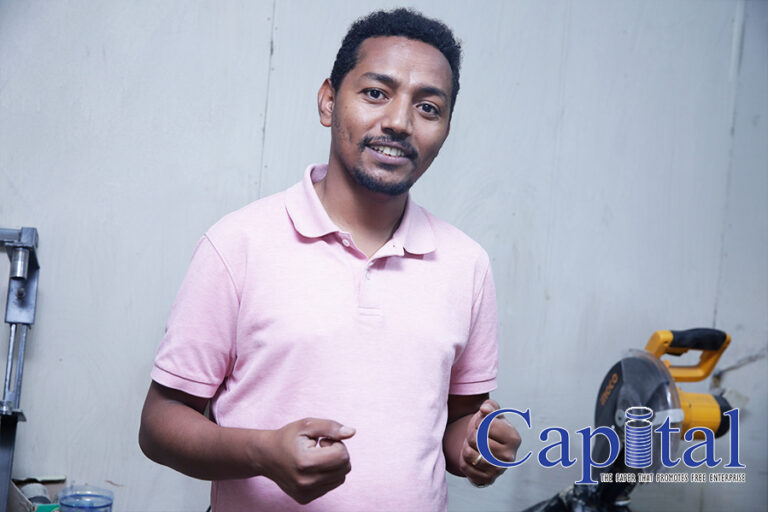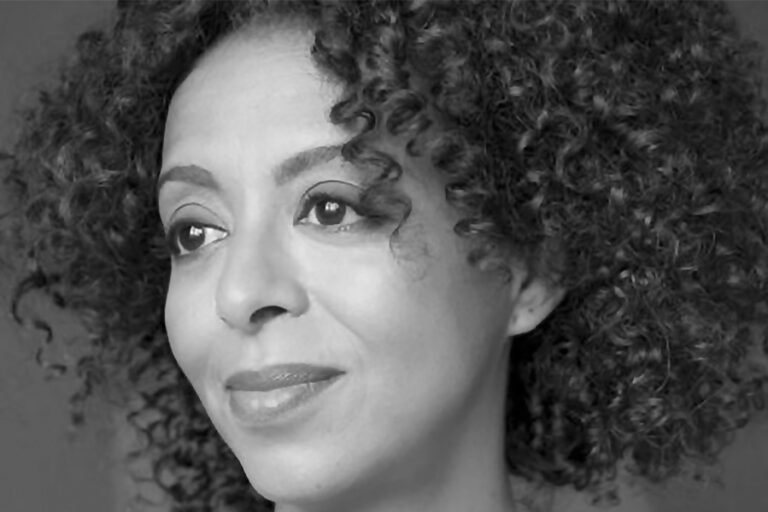The WHO estimates that only 5% of people with mobility impairments in developing countries have access to appropriate wheelchairs. In Ethiopia there are only a small number of wheelchair suppliers. The main supplier in Addis Ababa is an international NGO, which delivers approximately 600 wheelchairs each year to people with disabilities. These wheelchairs are imported from Switzerland and repaired and refurbished in Ethiopia. However, a relatively new and pioneering company is seeking to bridge this gap, through its innovative means. Bamboo Labs, founded by Abel Hailegiorgis is an award winning social enterprise in Ethiopia working to address the growing aspiration for sustainable and accessible mobility in Addis Ababa and Ethiopia as a whole.
This innovative company aims to be a leading player in the bamboo market in Ethiopia whilst contributing towards bringing more equitable, safer and greener mobility plan for the country. Capital sat down with its founder and CEO Abel Hailegiorgis, for an inside view of the inventive company. Excerpts;
Capital: Describe to us a bit about your background and how you founded Bamboo Labs Inc.
Abel Hailegiorgis: Before starting Bamboo Labs, I gained over 8 years of professional work experience in education, community development and engineering. With regards to my academic background, I received a bachelor’s degree in engineering from Adama Science and Technology University, as well as a bachelor’s degree in construction engineering from Addis Ababa University and masters in urban planning. However, my entrepreneurial spirit led me to discover bamboo and its environmental and social benefits. With that, I enrolled in a number of courses with the Ethiopia Technical University, where I learned how to design, fabricate, and produce bamboo products.
Along my journey, I learnt that nearly 10% of the world’s population has disabilities, of which 80% live in developing countries. Most of those in developing countries do not have access to rehabilitation services due to a lack of resources and other various
factors. Moreover, the World Report on Disability jointly issued by the World Bank and World Health Organization in 2011 estimated that 17.6% of the Ethiopian populations have a disability. In addition, according to the Ministry of Labour and Social Affairs, 95% of persons with disabilities in the country live in poverty – the vast of majority in rural areas, where basic services are limited and the chances of accessing rehabilitative or support services are remote.
In Ethiopia approximately 1.4 Million disabled people are in need of a wheelchair. However, to this end there are no companies or organization producing quality wheelchair in Ethiopia and less than two charity organizations are engaged in fabricating/distributing a very limited number of imported wheelchairs. As a result we started with the idea of making affordable, accessible wheelchairs in Ethiopia, and wanted to do it in an eco-friendly manner.
When I did a research, I found that bamboo is a sustainable material of the 21st century and Ethiopia holds the highest share of bamboo resource in Africa (70% of the total share of African bamboo is found in Ethiopia). A good attribute to bamboo is that it is a fast growing grass requiring significantly less land water to grow than, timber, and can absorb up to five times more C02 and release up to 35% more oxygen than an equivalent stand of trees. Furthermore, it can be harvested after only 4-5 years and re-grows easily from the remaining Culm shoot. This background is what led me to start Bamboo Lab Inc. so as to help the persons with difficulties with cheap sustainable technology.
Capital: What are your goals and value proposition?
Abel Hailegiorgis: Bamboo labs plans to bring value to the Ethiopian community in 2 ways:
Accessibility: Focus on bringing affordable wheelchairs to the market to increase accessibility.
Sustainability: Focus on creating sustainable products that provide environmental, social, and economical benefits.
With regards to our goals we aim to: improve the livelihood of individuals and communities by improving access to modes of mobility, create local jobs and strengthen the local economy by using locally grown bamboo and be a leading player in using bamboo in the Ethiopian market and advocate for reducing our carbon footprint. In these three ways Bamboo Labs hopes to contribute to the part played by Ethiopia in achieving the United Nations Sustainable Development Goals and addressing the challenges arising from increased urbanization to ensure a more prosperous, equitable and sustainable way of life in the future.
Capital: What are the products you produce and how is business?
Abel Hailegiorgis: Bamboo labs is a pioneering company in Ethiopia with ambitious plans to produce wheelchairs and bicycles made out of bamboo. With regards to business, I would say it’s remarkable for a trailblazing company in Ethiopia in this niche.
Capital: Do you export your products? If you’re not exporting currently do you have plans to do so in future?
Abel Hailegiorgis: Aiming to capitalize on the huge supply of bamboo in Ethiopia and aligning with the government’s push for more sustainable modes of transport, bamboo labs plans to produce bamboo bikes and wheelchairs for the domestic market and bamboo bike frames for the export market.
In the first year Bamboo Labs plans to produce a total of 195 finished bikes (120 adult bikes and 75 children bikes). We will
graduate our production process, prioritizing quality over quantity, with 16 finished bikes planned for the first two months
increasing to 30 per month by the end of the year.
Capital: Where did you get the bamboo for your products?
Abel Hailegiorgis: They are sourced locally. Ethiopia has an estimated one million hectares of natural bamboo forest, the largest in the African continent. There are 2 bamboo species considered to be native of Ethiopia: Oxytenanthera abyssinica (lowland bamboo) and Yushania arundinaria alpina (highland bamboo). In addition, over 20 additional exotic bamboo species have been introduced and currently we are using the highland bamboo from Sidama (Hagereselam) and Awi zone(enjibara).
Capital: How do you asses the reliability and marketability of your products as bamboo products are not common here in Ethiopia?
Abel Hailegiorgis: Building on my time spent abroad, I have made a network of contacts and received advice from the Bamboo Bike Club in London and from Calfee Bikes in California, the pioneer in bamboo bike production. James Marr, the founder of Bamboo Bike Club in London, sent us some one-time jig frames to help move forward in our work. Therefore, the reliability of our products are of international standards. With regards to marketing I am assisted by two colleagues helping with sales and promotion and we are seeking to expand this network to international contacts. Moreover, a website has been created showcasing the company’s work and contacts are being established with potential international partners.
Sales of bamboo bikes in the local market will compete against imported bikes. Finished adult bikes will be priced at $495 and children’s bikes at $445. We will sell to local bike dealers in Addis Ababa and to ex-pats from international embassies and organizations. We are already taking orders for children’s bikes from Ethiopians living in Addis Ababa, so are marketing seems to have been productive.
Capital: What support did you get from the government?
Abel Hailegiorgis: In the wake of a recent push by the Ethiopian Government for more sustainable transport and following the opening of several new green spaces in Addis Ababa – including the Gulele Botanical ,Garden, Unity Park, Entoto Natural Park and Sheger Park – the issue of accessibility to affordable bikes has come more into the mainstream of national dialogue.
The Ethiopian government has recently launched the Non-Motorised Transport (NMT) Strategy 2020-29, which outlines measures that the country will implement over the next ten years to improve mobility and facilitate inclusive urbanization. However, with these measures comes an even bigger question.
How do you facilitate sustainable and accessible mobility with one of the fastest urbanising countries in sub-Saharan Africa? To this end, we are discussing with Transport ministry how to implement this bamboo bike idea in Ethiopia and some other countries.





